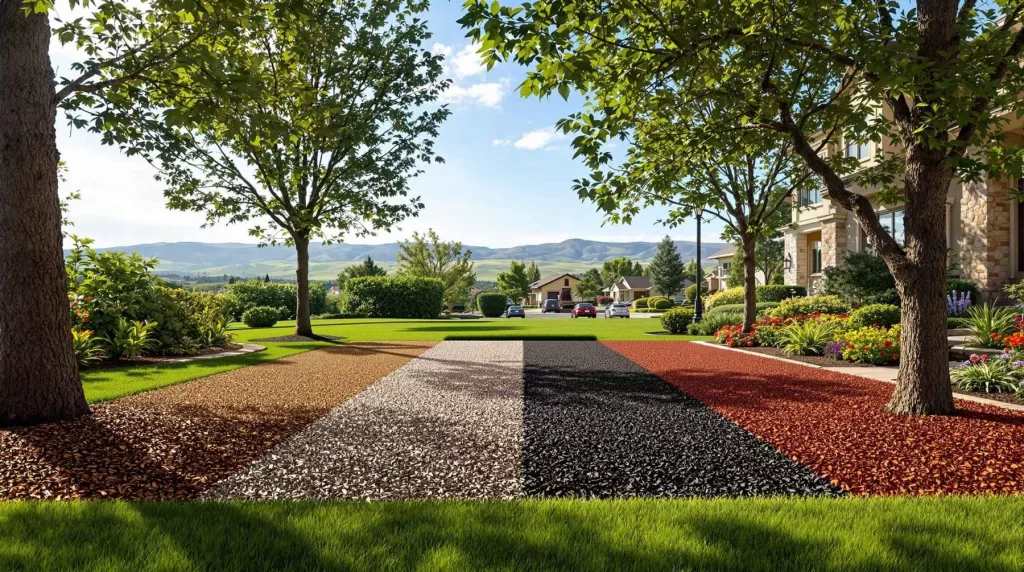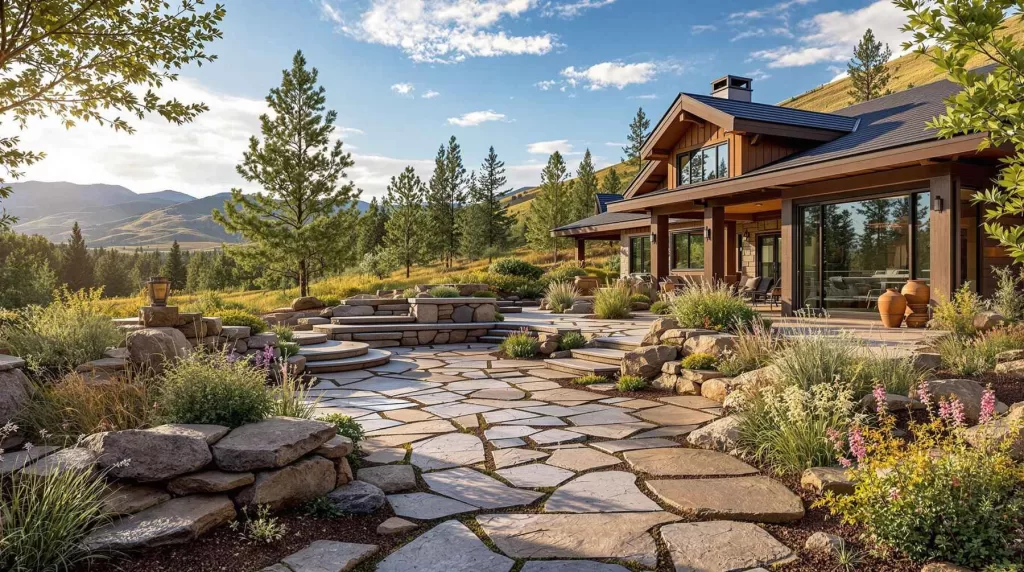Introduction
In the high-altitude town of Castle Pines, spring lawn care comes with unique challenges—and aeration is one of the most powerful ways to set your lawn up for success. Whether you’re dealing with compacted clay soil, dry patches, or a slow-to-wake yard coming out of winter dormancy, knowing when and how to aerate can make all the difference in achieving thick, healthy turf this season.
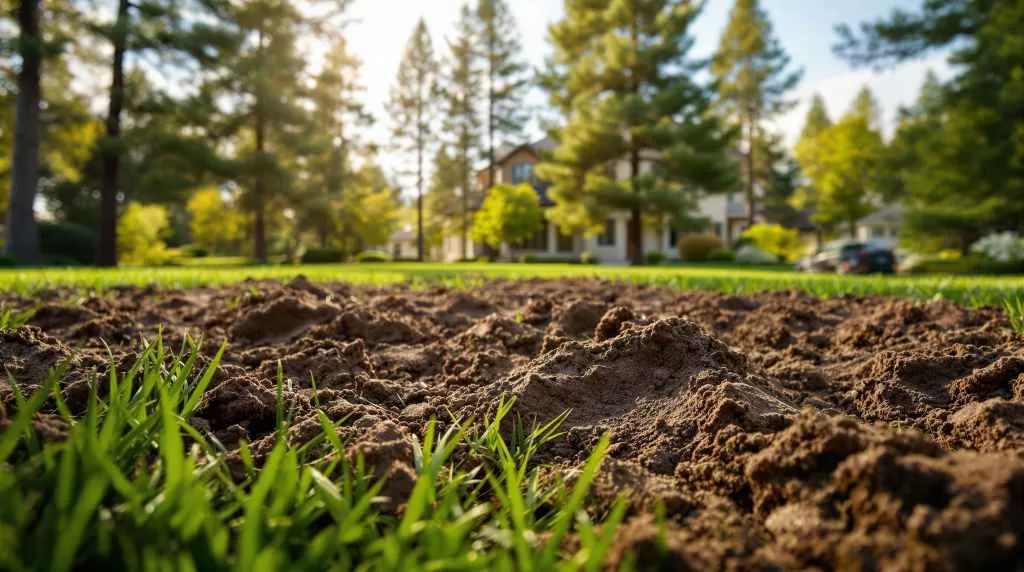
Why Lawn Aeration Matters in Castle Pines
For homeowners looking to improve their turf this spring, our Castle Pines landscaping company offers insight into how lawn aeration revitalizes your soil and supports deep root development in the region’s challenging climate.
The Role of Soil Compaction
Over time, soil becomes compacted from foot traffic, snow pressure, and heavy equipment, which restricts airflow and water from reaching the roots. Aeration breaks up this compaction, creating space for nutrients and moisture to penetrate the soil and encourage healthier grass growth.
Benefits of Aeration for Grass Health
Aeration promotes stronger, deeper roots by improving oxygen flow, water absorption, and nutrient delivery. This not only boosts the health of your lawn in the short term but also helps it withstand drought, disease, and high foot traffic throughout the summer.
Castle Pines Soil and Climate Considerations
Castle Pines’ elevated terrain and clay-heavy soil create conditions where moisture struggles to soak in and roots can’t expand easily. Add in freeze-thaw cycles and dry spring winds, and you’ve got the perfect case for spring aeration to give your grass the room it needs to breathe and grow.
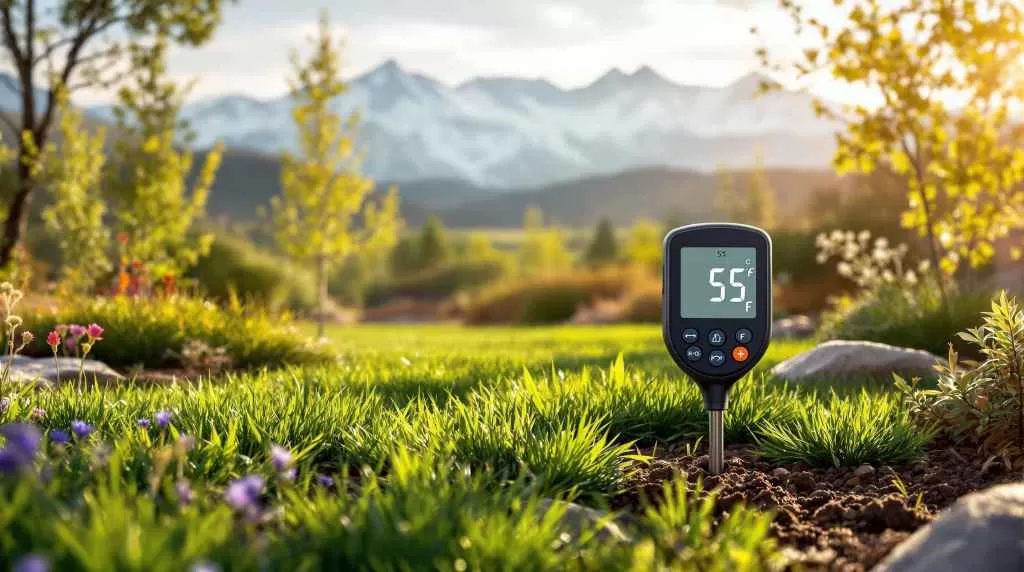
The Best Time to Aerate in Castle Pines
To get the most out of your spring lawn care, timing is everything—and it’s one of the reasons homeowners often turn to high-end Castle Pines landscaping services for guidance. Aerating too early or too late can reduce the effectiveness of the process and miss the narrow window when your lawn is most responsive.
Understanding Spring Soil Temperatures
In Castle Pines, elevation slows down soil warming in the spring. Aeration should begin when the soil consistently reaches around 55°F, which typically happens in late April or early May. At this temperature, grassroots start waking up, and conditions are ideal for promoting new growth through aeration.
Watching for the Right Growth Stage
A reliable indicator that it’s time to aerate is when your lawn enters its early growth phase—usually visible as a light green flush across the yard. Aerating during this period helps loosen compacted zones while roots are actively expanding, ensuring that water and nutrients reach the right depth.
Why Fall Aeration Alone Isn’t Enough
While fall aeration is essential, spring aeration plays a different role. After a long winter with heavy snow and foot traffic, the ground is often compacted and crusted over. Skipping spring aeration can lead to shallow roots, patchy growth, and wasted water as it runs off instead of soaking in where it’s needed most.
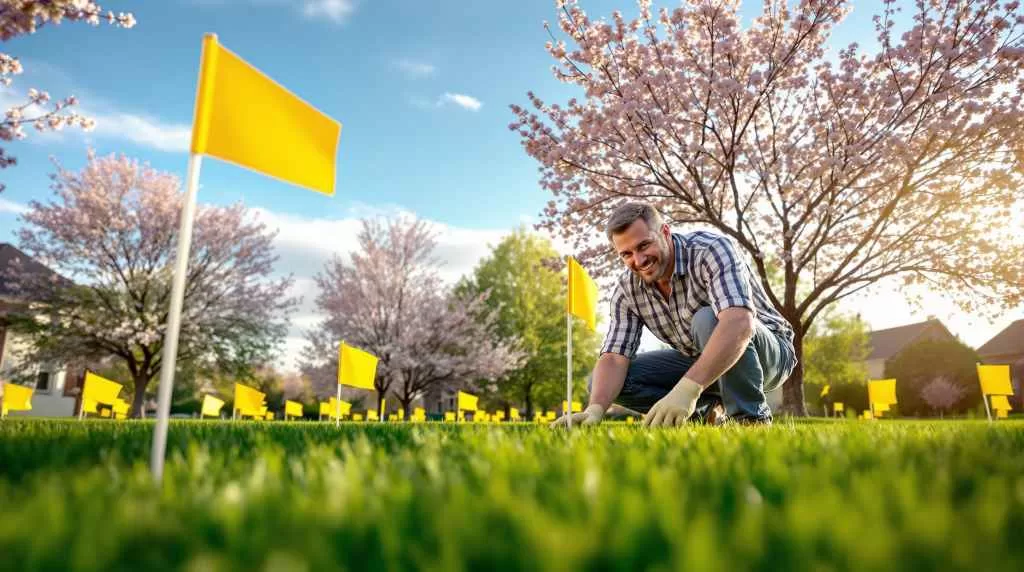
How to Prepare Your Lawn for Spring Aeration
Proper prep work ensures your lawn gets the full benefit of spring aeration and avoids any unintentional damage to your yard or irrigation system. Taking just a few extra steps can make a noticeable difference in how your grass responds post-aeration.
Mowing and Watering in Advance
Cut your lawn to a normal mowing height the day before aeration, and lightly water it to soften the soil. Moist—not soggy—soil helps the aerator penetrate deeply, pulling better plugs and avoiding surface tearing, especially in the dense soils common in Castle Pines.
Marking Irrigation and Utility Lines
Before aerating, be sure to flag all sprinkler heads, valve boxes, lighting wires, and other shallow utilities. Most aerators dig 2–3 inches deep, which is more than enough to damage unmarked lines. A few minutes of marking can prevent costly repairs later.
Identifying Problem Zones
Walk your yard and take note of areas with heavy foot traffic, standing water, or bare patches—these will likely need extra passes with the aerator. Addressing compacted zones more aggressively ensures your lawn’s worst areas don’t hold back its overall health and appearance.
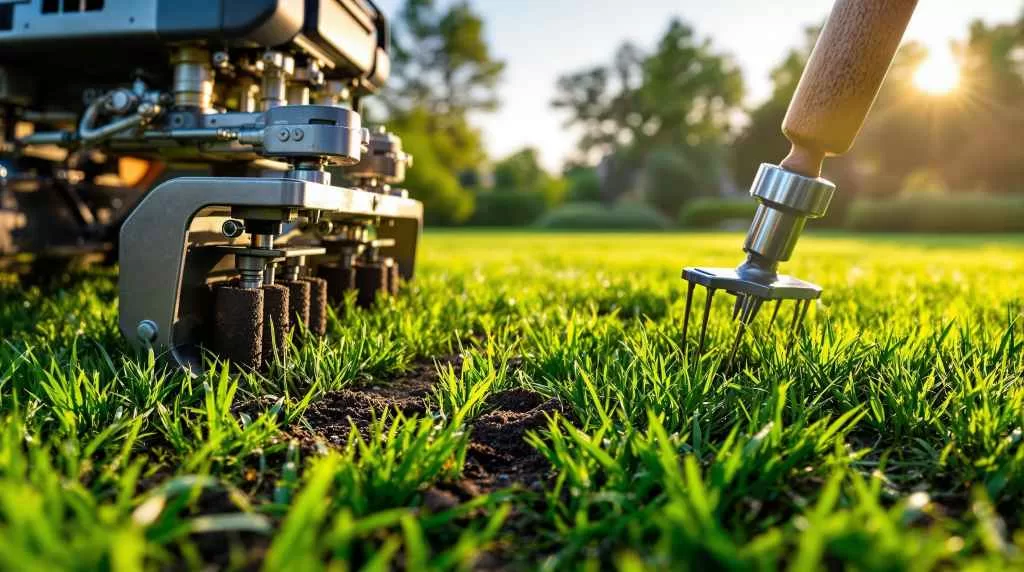
Types of Aeration Methods: What Works Best in Castle Pines
Not all aeration techniques deliver the same results—especially in Castle Pines, where soil density and elevation impact effectiveness. Understanding the differences will help you choose the best method for your lawn’s needs.
Core Aeration vs. Spike Aeration
Core aeration is the preferred method in Castle Pines due to its ability to remove actual plugs of soil, reducing compaction at the root level. Spike aeration, which simply pushes holes into the ground, can compact soil further around the spikes, making it less effective in our region’s dense clay soils.
Manual vs. Mechanical Aerators
Manual aerators work well for small lawns or tight areas, but for most properties in Castle Pines, a gas-powered mechanical aerator will save time and deliver more consistent results. These machines penetrate deeper and cover large areas more efficiently, making them ideal for residential yards with widespread compaction.
Why You Should Avoid DIY Spike Shoes
Aeration shoes may sound convenient, but they typically do more harm than good. Rather than loosening the soil, they compress it further beneath each step, and their shallow spikes rarely penetrate deep enough to make a real difference. They’re better suited for novelty than results.
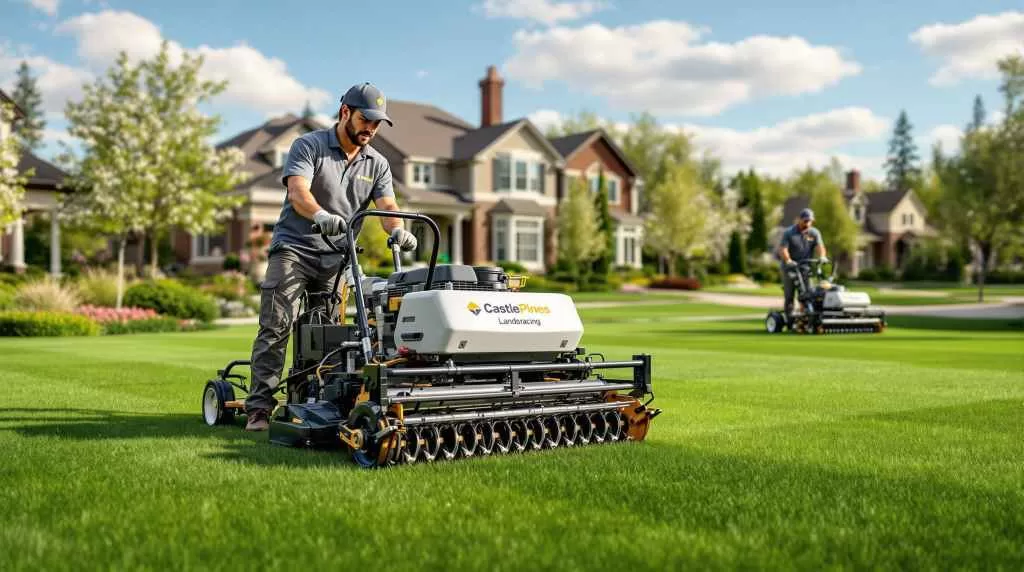
Hiring a Professional vs. DIY Aeration
When deciding between doing it yourself or hiring help, many homeowners turn to high-end Castle Pines landscaping services to ensure the job is done right the first time. Factors like equipment, technique, and time investment play a big role in determining which option is best for your lawn and lifestyle.
Time and Equipment Considerations
DIY aeration requires renting a machine, transporting it, and setting aside several hours for the job—not to mention physical effort. For many homeowners, especially those with medium-to-large lawns, hiring a crew with commercial-grade equipment is a more efficient and stress-free choice.
Risks of Improper Technique
Without proper training, it’s easy to make mistakes like overlapping too much or missing large areas entirely. These issues can result in uneven root development or compacted zones, which may do more harm than good. A professional ensures consistent spacing, correct depth, and total coverage.
Benefits of Hiring a Local Landscaping Expert
Professionals who work locally understand Castle Pines’ unique soil conditions, elevation, and weather patterns. They can customize the aeration process to your yard’s needs—and often bundle it with overseeding, fertilization, or irrigation checks for a comprehensive spring lawn tune-up.
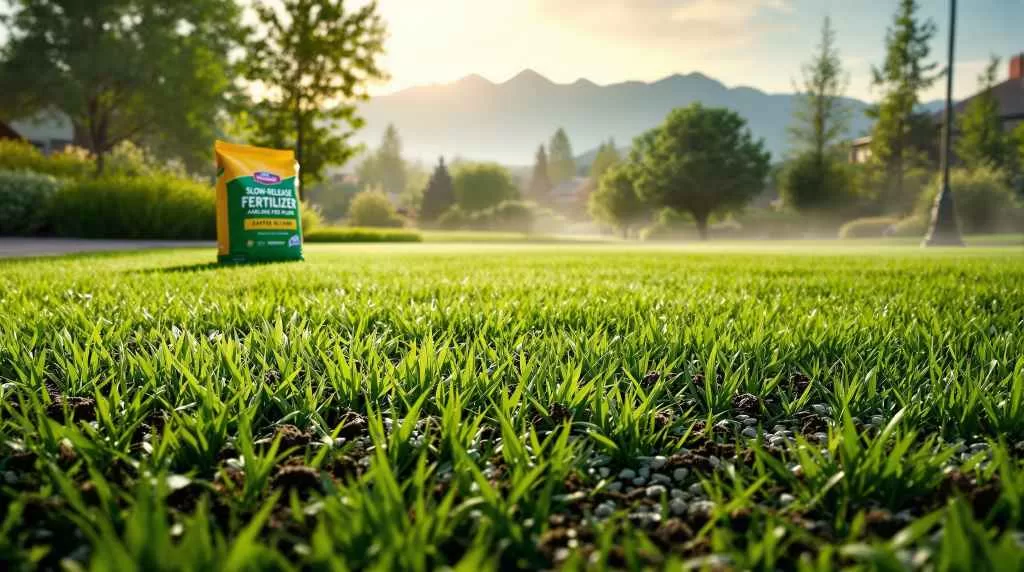
What to Do Immediately After Aerating Your Lawn
Once the aeration process is complete, your lawn enters a critical recovery and growth phase. To elevate your outdoor space in Castle Pines, taking the right post-aeration steps ensures your grass can take full advantage of the improved soil conditions.
Leave the Soil Plugs Alone
As unattractive as they may look at first, the plugs of soil left on your lawn should be left in place to break down naturally. These decomposing plugs help reintroduce nutrients into the soil while filling in the holes created by the aerator.
Overseeding and Fertilizing
Post-aeration is the perfect opportunity to overseed thin or patchy areas since seeds have better soil contact and less competition from existing grass. Pair this with a high-quality, slow-release fertilizer to give new and existing roots a boost of nutrients right when they need it most.
Watering Best Practices
Your lawn should be watered lightly but consistently for the first two weeks after aeration, especially if you overseed. Moisture helps new seed germinate and ensures nutrients from fertilizer move into the soil efficiently without washing away. Avoid heavy soaking to prevent puddling in the newly aerated holes.
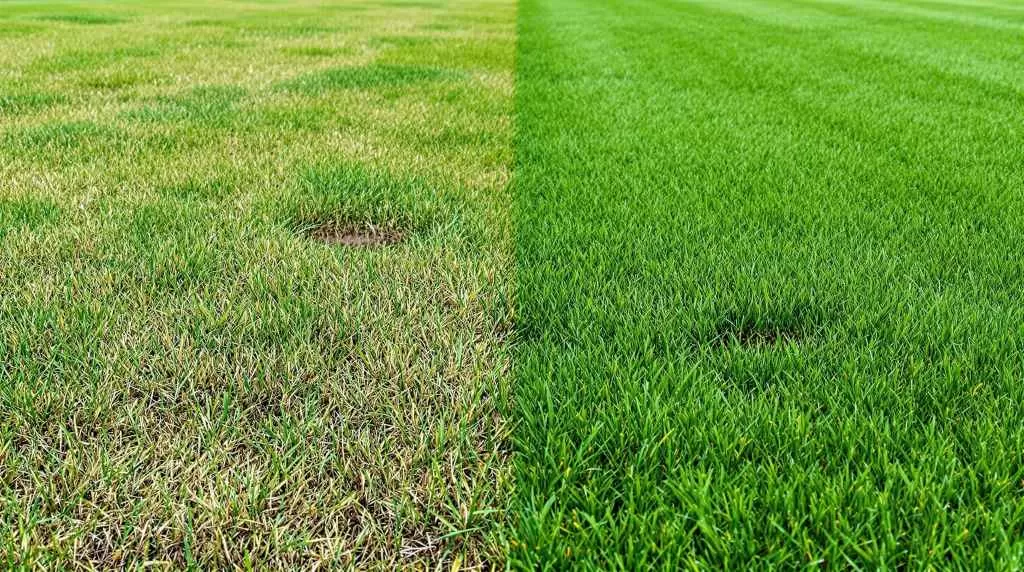
Common Mistakes to Avoid During Spring Aeration
Even with the best intentions, small errors during the aeration process can limit your results or even harm your lawn. Knowing what to avoid can help you get the most from your spring lawn care routine.
Aerating Too Early in the Season
Aerating before the soil is warm enough or before your grass is actively growing can delay recovery and limit root development. In Castle Pines, it’s best to wait until late April or early May when soil temperatures are ideal for cool-season grasses.
Skipping the Cleanup and Aftercare
Aeration isn’t a one-and-done task—it requires follow-up. Failing to fertilize, overseed, or water appropriately after aerating can waste the benefits of the process and lead to dry, patchy areas instead of lush growth.
Using the Wrong Equipment
Using dull, shallow, or improperly maintained aerators can compact the soil further or damage your lawn’s surface. For dense Castle Pines soil, core aerators with sharp, hollow tines are essential for pulling out full plugs and opening the soil effectively.
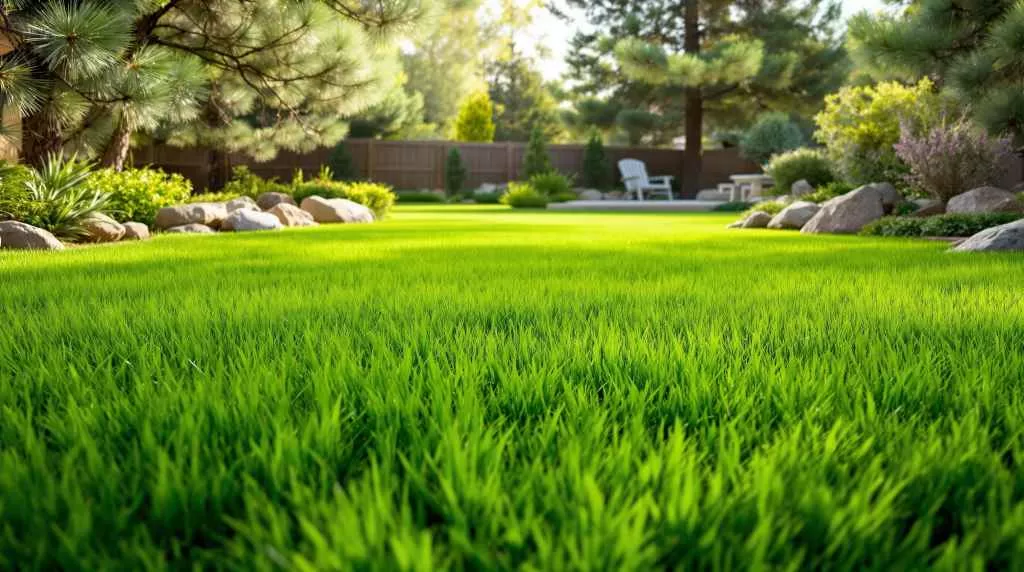
Long-Term Lawn Health After Spring Aeration
Spring aeration is a vital piece of the puzzle, but it works best as part of a year-round lawn care strategy. Consistent attention to soil, moisture, and nutrients will keep your yard looking its best long after the plugs have broken down.
Setting Up a Seasonal Lawn Care Plan
A healthy lawn in Castle Pines benefits from a structured, seasonal routine that includes mowing, watering, fertilizing, aeration, and overseeding. Planning ahead for each season helps you stay on top of tasks and adjust based on weather changes.
Monitoring Soil Health and Drainage
Keep an eye on how well your soil drains after rain or irrigation. Standing water or slow absorption can be signs that deeper compaction or poor grading needs to be addressed, possibly with re-aeration or soil amendments.
Scheduling Fall Aeration as a Follow-Up
While spring aeration wakes your lawn up, fall aeration sets it up for winter resilience. Combining both seasons gives your grass the best chance to develop strong roots, resist disease, and recover from Colorado’s extreme temperature swings.
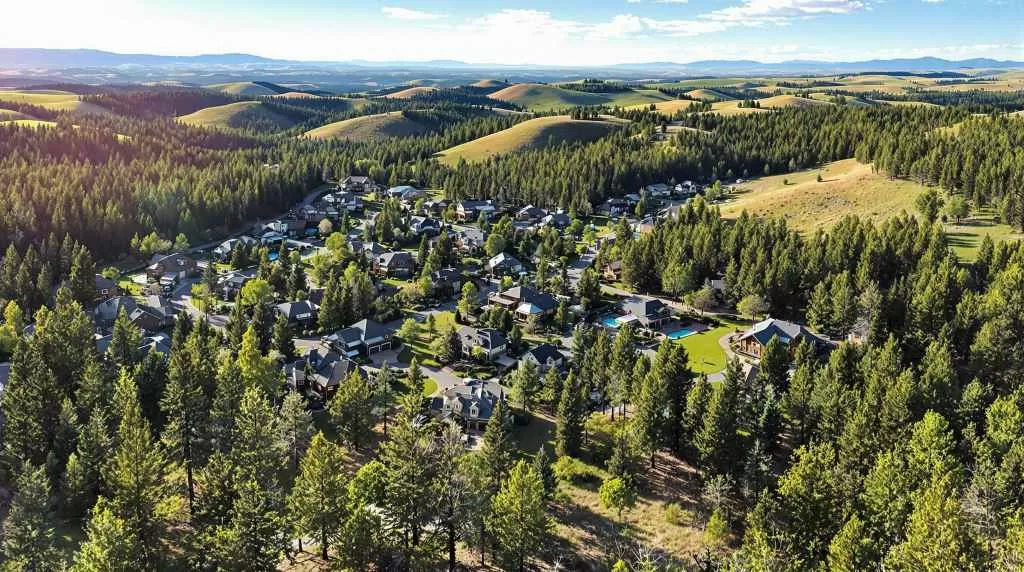
How Elevation Affects Aeration Timing in Castle Pines
Because of its high elevation, Castle Pines presents unique challenges when it comes to lawn care timing. Everything from soil temperature to growing seasons is affected by altitude, making it essential to adjust your aeration schedule accordingly—especially for full-scale backyard makeovers in Castle Pines where timing impacts every layer of the landscape.
Cooler Springs and Delayed Growth
Castle Pines sits at over 6,000 feet, which means spring arrives later than in lower elevation areas. Soil warms more slowly, and grass takes longer to break dormancy. This delay should be factored in before scheduling spring aeration, as premature timing could result in stunted recovery.
Shorter Growing Seasons
With a shorter window for turf growth, it’s important to maximize early-season lawn care efforts. Spring aeration gives your lawn a head start by improving root development before the summer heat, which is especially crucial in high-altitude regions where lawns don’t have the luxury of extended growing cycles.
Choosing the Right Grass for Your Elevation
Cool-season grasses like Kentucky bluegrass and tall fescue are ideal for Castle Pines due to their cold tolerance and deep root systems. These grasses also respond exceptionally well to spring aeration, bouncing back quickly and benefiting from the enhanced nutrient and water absorption.
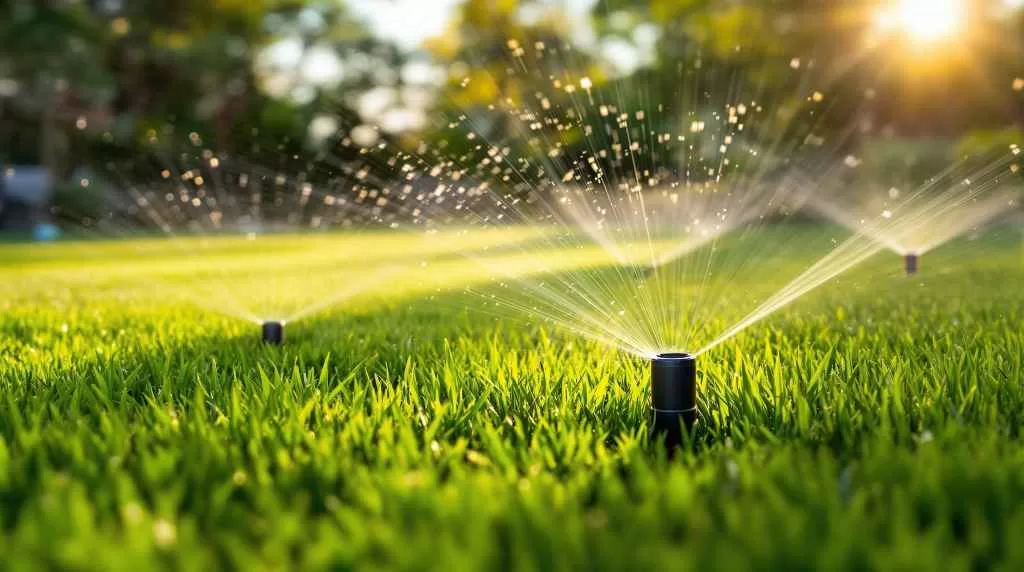
Aeration and Irrigation: A Crucial Spring Combo
Proper irrigation is just as important as aeration—especially in a dry, high-altitude climate like Castle Pines. When these two elements work together, they create the ideal environment for deep-rooted, drought-resistant turf.
Improving Water Penetration with Aeration
One of the key benefits of core aeration is its ability to break through surface compaction, allowing water to reach the root zone instead of running off. This improves efficiency and helps your lawn hold moisture longer, reducing the need for frequent watering.
Adjusting Irrigation Schedules Post-Aeration
After aeration, your lawn can absorb water more quickly and deeply. This means you may need to shorten watering times while maintaining frequency, ensuring the soil stays moist but not oversaturated during the critical growth period.
Solving Common Irrigation Problems with Aeration
If you notice dry spots, puddling, or runoff before aeration, those are signs of uneven absorption. Aeration helps even out water distribution across your lawn, reducing these issues and supporting consistent growth across the entire yard.
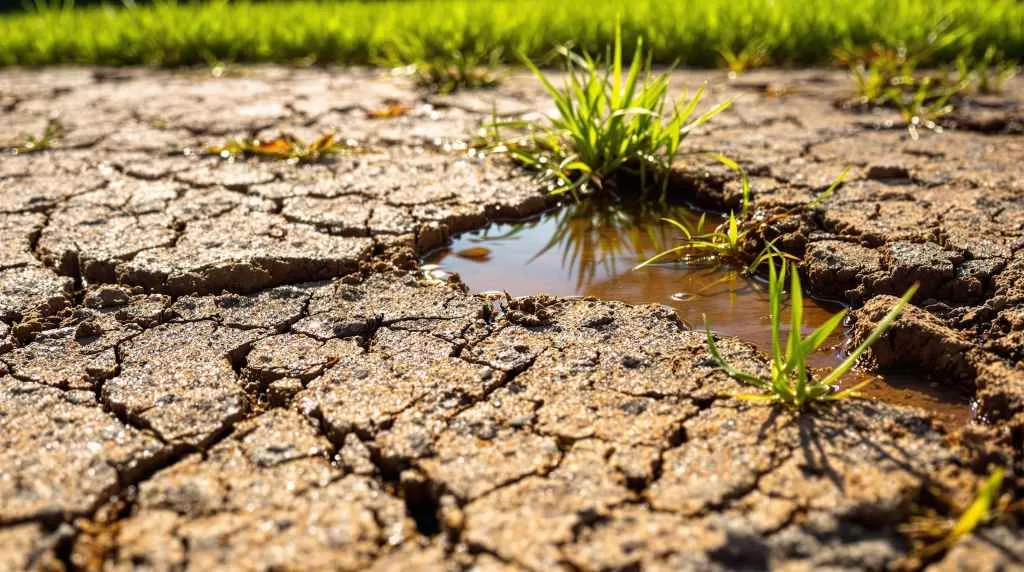
Signs Your Lawn Needs Aeration This Spring
Not sure if your lawn is due for aeration? Several visible and physical signs can help you determine whether it’s time to loosen up the soil. Identifying these issues early will give your grass a better shot at thriving through the warmer months.
Water Pooling or Runoff Issues
If you notice puddles forming or water sliding off the lawn instead of soaking in, your soil is likely too compacted to absorb moisture properly. This is a clear sign that aeration is needed to break through the surface and restore water penetration.
Patchy or Thin Grass
Sparse or uneven growth—especially in areas with high foot traffic—often points to compacted roots. Aeration allows air, nutrients, and water to reach deeper, helping thin or patchy areas recover more quickly with proper follow-up care.
Hard, Baked Soil Underfoot
If your lawn feels firm or even rock-hard when you walk on it, the soil structure is likely restricting root growth. Healthy soil should have some give, and aeration is one of the best ways to restore that soft, oxygen-rich texture that roots need.
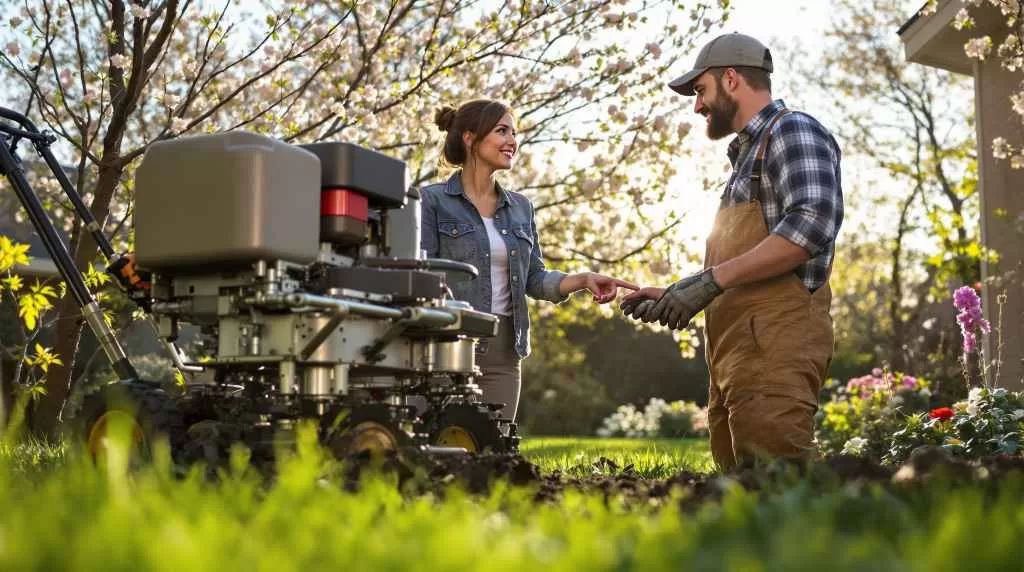
FAQs About Spring Lawn Aeration in Castle Pines
Spring aeration is one of the most common and effective property upgrades in Castle Pines, but many homeowners still have questions about timing, frequency, and expected results. This section answers some of the most frequently asked questions to help guide your lawn care decisions.
Can I Aerate in Late Spring?
You can aerate in late spring if your lawn is still actively growing, but it’s best done before the heat of summer arrives. Waiting too long can stress the grass as it shifts into heat survival mode, limiting its ability to recover from aeration.
How Often Should I Aerate My Lawn?
Most lawns in Castle Pines benefit from aeration once per year, especially those with clay-heavy soil or heavy foot traffic. However, if your lawn feels compacted or shows signs of stress, spring and fall aeration may both be necessary for optimal results.
Will Aeration Fix My Lawn Problems?
Aeration helps address many underlying soil issues, but it’s not a magic fix for all lawn problems. It should be paired with overseeding, fertilization, and proper irrigation to fully restore damaged or underperforming turf areas.
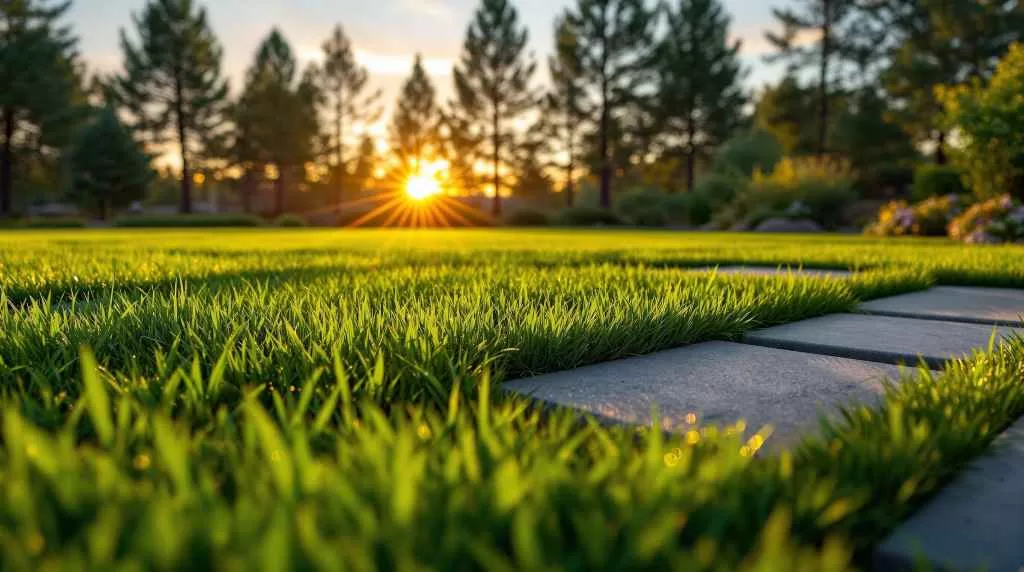
Ready to Transform Your Outdoor Space?
If you’re ready to breathe new life into your lawn this spring, our team at Custom Landscapes by Design is here to help. We proudly serve Castle Pines and surrounding areas like Castle Rock, Parker, and Highlands Ranch, offering expert lawn aeration as part of full-service outdoor upgrades. Whether you need seasonal care or a complete landscape renovation, we’ll create a plan tailored to your property’s needs. Reach out today to schedule your aeration service and experience the difference of professional, results-driven landscaping built for Colorado’s unique climate.

